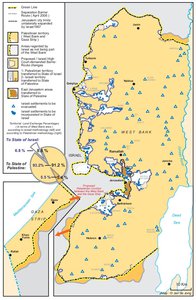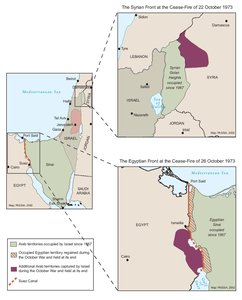THE OCTOBER WAR, 1973
Map Details
The October War of 1973 ended in a virtual ‘draw’, yet saw Israel’s perceived invincibility shattered. As such, the war brought political and social turmoil to Israel and restored much of the strategic maneuverability the Arab states had lost in 1967. Since President Nasser’s death in September 1970, his successor Anwar Sadat, had responded to domestic and regional doubts about his credibility and the role of post-1967 Egypt by seeking a way out of the prevailing stalemate with Israel. Sadat came to power after a 17-month war of attrition (1969-70) waged along the closed Suez Canal had already pitched US-client Israel against Soviet-aligned Egypt in a struggle, which ended inconclusively and increased Arab malcontent with the status quo. Hafez Al-Assad’s 1970 rise to power in Syria, like Sadat’s in Egypt, prompted awkward questions about the aims and worth of Arab solidarity in the face of Israel’s intransigent occupation. Both leaders sought a way to extract themselves with honor from the humiliating legacy of 1967. Meanwhile, in Israel, Prime Minister Golda Meir and Defense Minister Dayan led a distinctly ‘hawkish’ Labor government, wherein even Foreign Minister Eban complained of his colleagues’ “...exaggerated vision of the role of war in international politics.” With the Vietnam War raging, the US, guided by the so-called Nixon Doctrine, was set on limited containment of the Arab-Israeli Cold War theater, opting to keep the sides engaged in “protracted and inconclusive negotiations,” through low-level channels. By late 1971, Nixon’s National Security Council head Henry Kissinger was pleased to see, “the stalemate for which I had striven by design.” Sadat repeatedly sought a diplomatic breakthrough, presenting UN Secretary-General Jarring and US Secretary of State Rogers with a number of unprecedented concessions and formulations. Breaking with all prior stipulations, in 1971 he declared his willingness to accept a token Israeli withdrawal from the Suez zone as part of an interim deal, in a significant move the US later regretted having missed. In any event, Israel, operating under an inflated belief in its own might and Arab impotence, either rejected or ignored Sadat’s initiatives, and came under no US pressure to acknowledge them. Turning instead to the OPT, in 1973 Israel prepared a new hard-line plan for expanded colonization in the Palestinian territories (the Galili Document). Defense Minister Dayan proclaimed, “[a] new State of Israel, with broad frontiers, strong and solid, with the authority of the Israel Government extended from the Jordan to the Suez Canal.” Sadat’s dramatic 1972 expulsion of some 15,000 Soviet personnel had loosened the Cold War restraints on military action and placed the strategist in unfettered command of Egypt’s Soviet weaponry. On 6 October 1973, he acted; Syria and Egypt launched a coordinated offensive against the Israeli forces occupying the Golan and Sinai on Yom Kippur - the holiest day of the Jewish calendar. The surprise was total, and initial Arab gains impressive, but after nearly three weeks and two separate cease-fires (Syria-Israel on 22 October, Egypt-Israel on 26 October), neither Israeli nor Arab armies had achieved a territorial victory. Some 2,838 Israelis and 8,528 Arabs had paid with their lives, but the deadlock was broken. UNSC Resolution 338, ordering the cease-fire of 22 October, invoked UNSC Resolution 242 of 1967, with its demand for an Israeli withdrawal from occupied territories and a just solution to the Palestinian refugee problem in accordance with International Law. UN troops were deployed to enforce the cease-fires; Israel was forced back from the Suez, which reopened under Egyptian control; and the US was finally forced into active, high-level shuttle diplomacy between Cairo, Damascus and Israel. The October War brought down the Israeli government amid national crisis and laid the foundations for the first substantive Arab-Israeli peace talks. It also placed the US in the fateful position of Middle East mediator and reinvigorated the struggle to resist Israel’s expansionism - a goal which suddenly appeared eminently more possible.
Related Maps
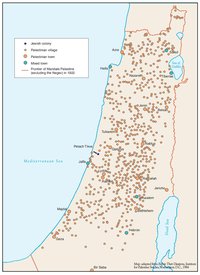
OTTOMAN PALESTINE, 1878
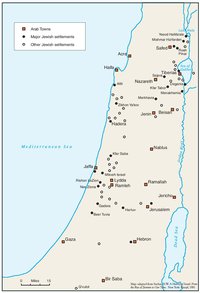
ARAB TOWNS AND JEWISH SETTLEMENTS IN PALESTINE, 1881-1914
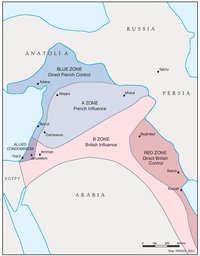
THE SYKES-PICOT AGREEMENT, 1916
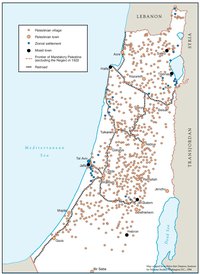
THE BEGINNING OF THE BRITISH MANDATE, 1920
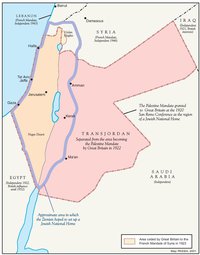
PALESTINE UNDER THE BRITISH MANDATE
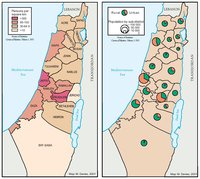
THE DEMOGRAPHY OF PALESTINE, 1931
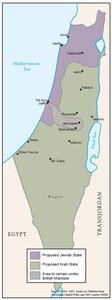
THE PEEL COMMISSION PARTITION PROPOSAL, 1937
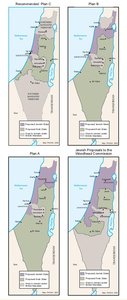
THE WOODHEAD COMMISSION PARTITION PROPOSALS, 1938
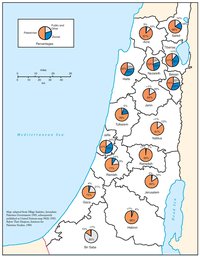
PALESTINIAN AND ZIONIST LANDOWNERSHIP BY SUB-DISTRICT, 1945
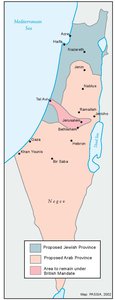
THE MORRISON-GRADY PARTITIONED TRUSTEESHIP PLAN, 1946
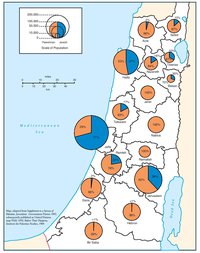
POPULATION OF PALESTINE BY SUB-DISTRICT, 1946
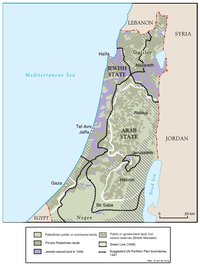
LAND OWNERSHIP IN PALESTINE, 1948
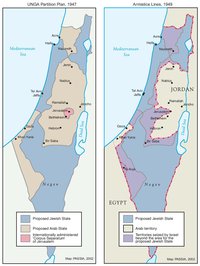
THE UNGA PARTITION PLAN, 1947 – THE 1948 WAR & THE 1949 ARMISTICE LINES
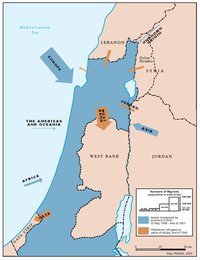
POPULATION MOVEMENTS, 1948-1951
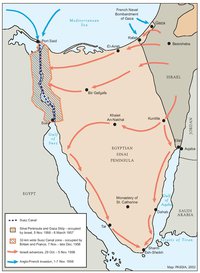
THE SUEZ WAR, 1956

LAND OWNERSHIP IN PALESTINE AND THE UN PARTITION PLAN - PALESTINIAN DEPOPULATED AND DESTROYED VILLAGES, 1948-1949
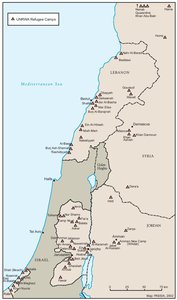
THE PALESTINIAN DIASPORA, 1958
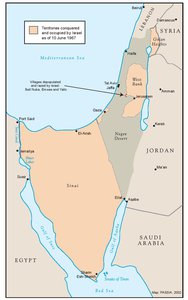
THE NEAR EAST AFTER THE JUNE 1967 WAR
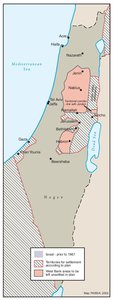
THE ALLON PLAN, JUNE 1967
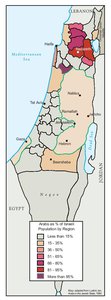
THE PALESTINIANS INSIDE ISRAEL, 1977
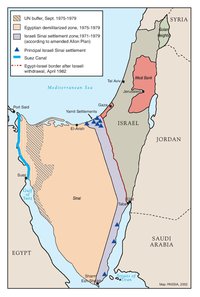
THE CAMP DAVID ACCORDS, 1978-1979
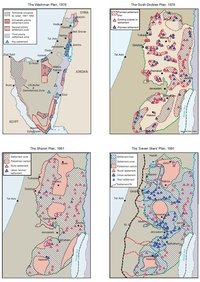
ISRAELI SETTLEMENT MASTER PLANS, 1976-1991
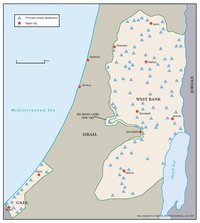
THE 1991 MADRID PEACE CONFERENCE & ISRAELI SETTLEMENTS
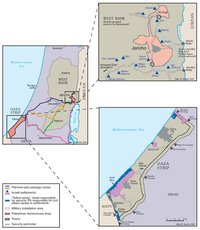
GAZA-JERICHO (OSLO I) AGREEMENT, CAIRO, 4 MAY 1994
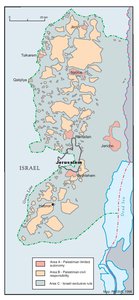
INTERIM (OSLO II) AGREEMENT, TABA, 28 SEPTEMBER 1995
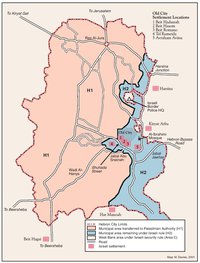
HEBRON PROTOCOL, 15 JANUARY 1997
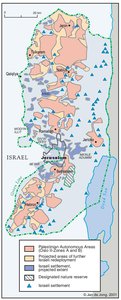
WYE RIVER MEMORANDUM, 23 OCTOBER 1998
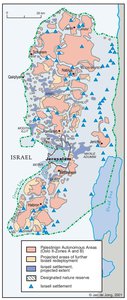
SHARM ESH-SHEIKH AGREEMENT, 4 SEPTEMBER 1999
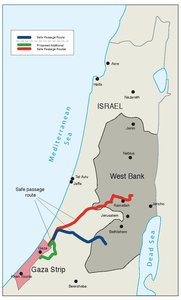
PROTOCOL CONCERNING SAFE PASSAGE BETWEEN THE WEST BANK AND THE GAZA STRIP, 5 OCTOBER 1999
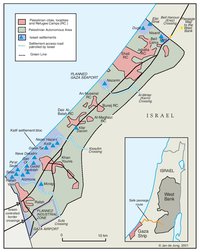
GAZA, 2000
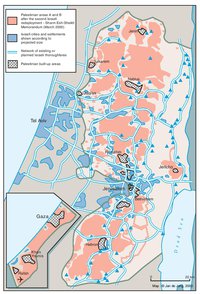
WEST BANK AND GAZA STRIP, MARCH 2000
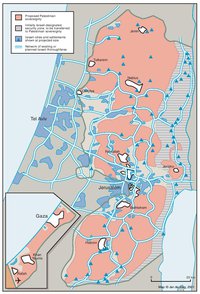
CAMP DAVID PROJECTION, JULY 2000
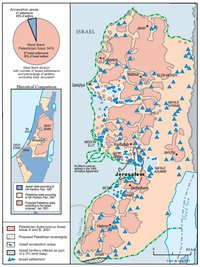
TABA TALKS PROJECTION, JANUARY 2001
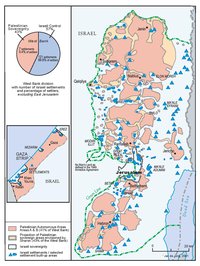
THE SHARON PROPOSAL, SPRING 2001
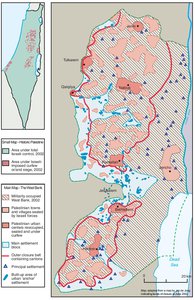
THE REINVASION OF THE PALESTINIAN TERRITORIES, 2001-2002
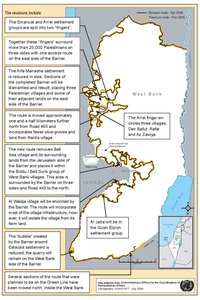
THE ROAD MAP, 2003
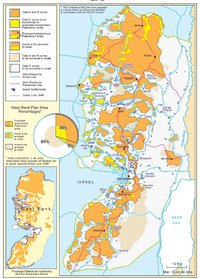
THE GENEVA INITIATIVE AND ACCORD, 2003
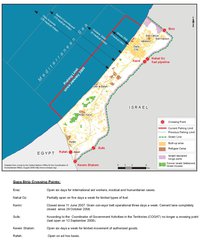
THE ISRAELI DISENGAGEMENT PLAN, 2003-2005
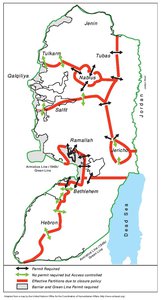
AGREED DOCUMENTS ON MOVEMENT AND ACCESS FROM AND TO GAZA, 2005
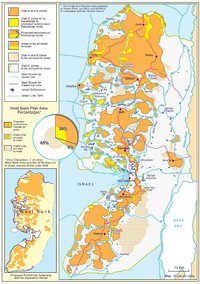
THE SETTLERS' PLAN FOR PALESTINIAN AUTONOMY, 2006

THE GAZA STRIP TODAY (2014)
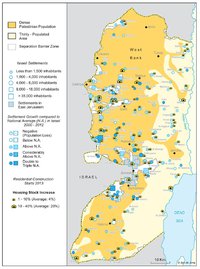
THE WEST BANK TODAY (2014)
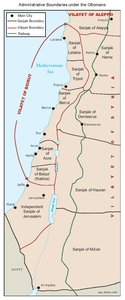
ADMINISTRATIVE BOUNDARIES

HEBRON

Area C
